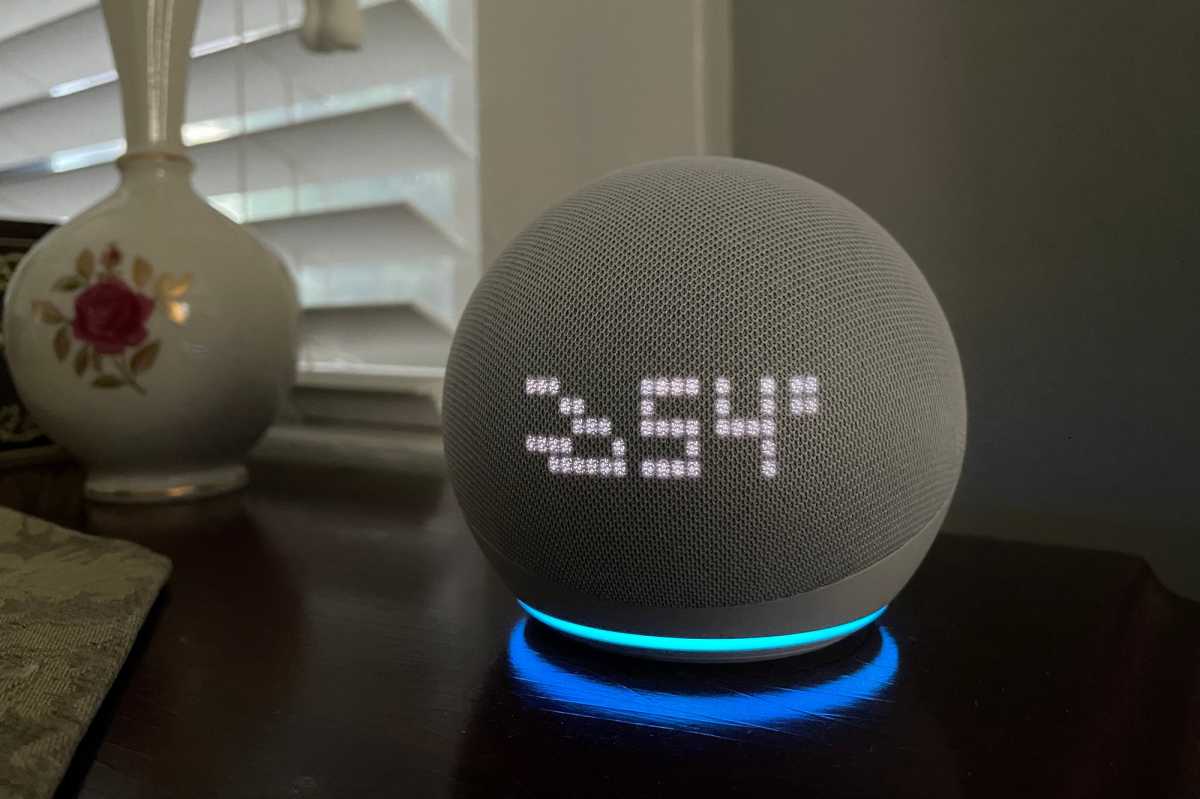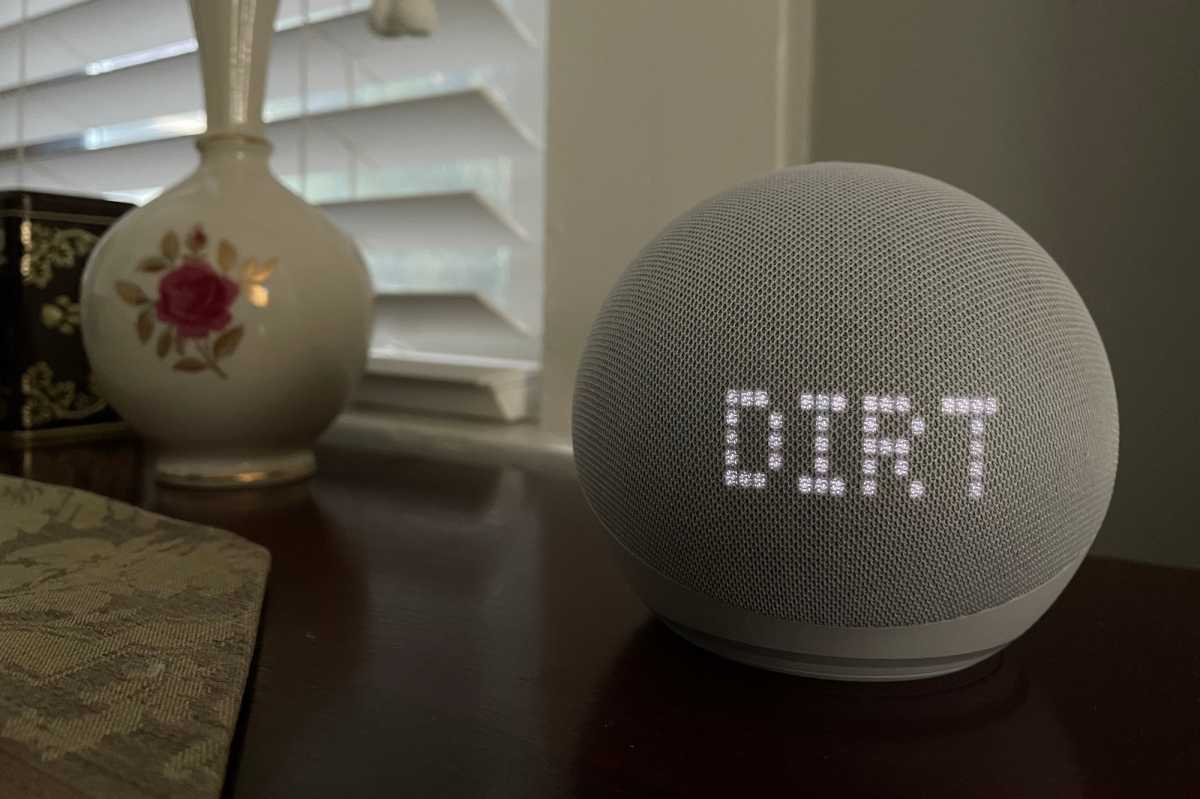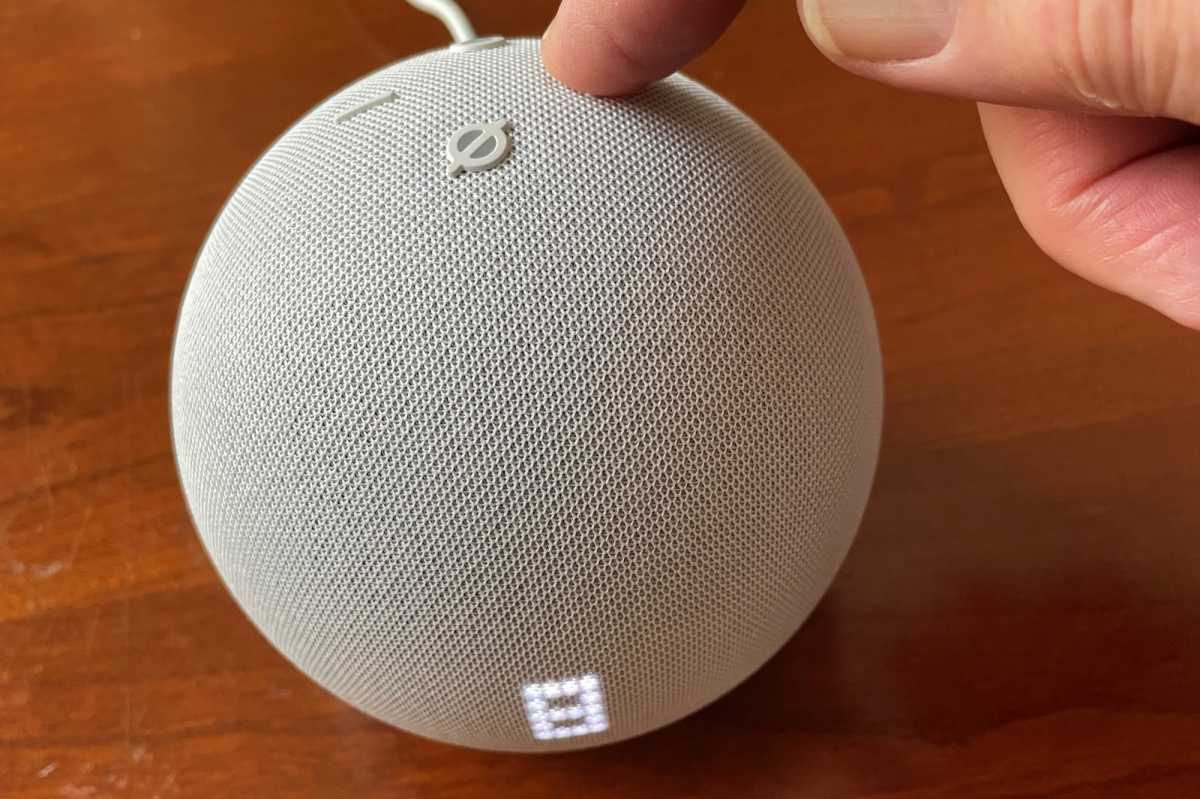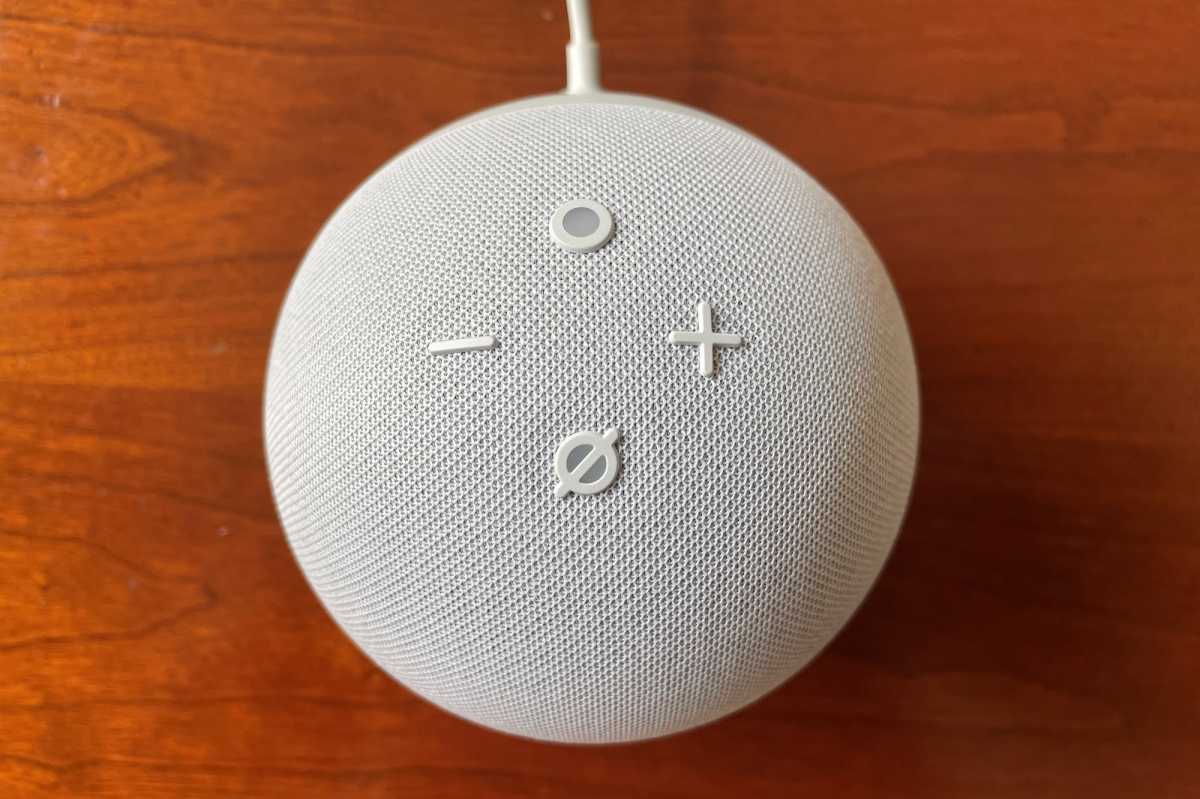Expert’s Rating
Pros
- Larger display conveys more information
- Highly useful ambient temperature sensor
- Accelerometer for gesture recognition
- Can operate as a node on an Eero mesh Wi-Fi network
Cons
- Audio performance still pales in comparison to a Sonos One
- 3.5mm analog audio output has been removed
- Mesh node feature is useful only to those with Eero routers
Our Verdict
Amazon still has the best entry-level smart speaker, and the company has added several great features to this generation to make it even better.
Best Prices Today: Amazon Echo Dot with Clock (5th Gen)

$59.99

$59.99
The fifth generation of the Amazon Echo Dot is the best value in smart speakers today, and the model reviewed here comes with a very useful display for $10 more. Both the Echo Dot (5th Gen) and the Echo Dot with Clock (5th Gen) offer several new features that will justify an upgrade for many owners of fourth-gen and earlier models. And despite inflation, these new models cost the same as the old ones: $49.95 and $59.95 respectively.
This review is part of TechHive’s in-depth coverage of the best smart speakers.

The larger display on the Amazon Echo Dot with Clock (5th Gen) allows the smart speaker to display an icon for weather conditions (cloudy) in addition to the temperature.
Michael Brown/Foundry
Both versions of the 5th-generation Echo Dot offer a new and more powerful CPU—Amazon’s AZ2 Neural Edge Processor—and both have several attractive new features. The clock model’s most obvious new feature is its brighter and more legible clock display. In addition to displaying the current temperature, that display can now also show the name of the song that’s currently playing as well as the name of the artist. But this display is only about 2 inches wide, so the information scrolls off to the left rather quickly and then the display reverts to the clock again. Alexa will tell you what’s playing, if you ask, but the information won’t be displayed again—until the next song plays.
A new 44mm (1.73-inch) high-excursion driver (compared to the previous model’s 1.6 inch driver) promises to deliver clearer vocals and better bass response from the same spherical enclosure as the 4th-Gen Dot, although no Amazon smart speaker apart from the Echo Studio approaches the audio performance of the Sonos One. Props to Amazon for trying, but they can only do so much with a speaker enclosure the size of a softball.

The two-inch-wide display is limited into the amount of information it can display. Here the Echo Dot is playing Steely Dan’s “Dirty Work.” The name of the band had already scrolled off to the left of the display here.
Michael Brown/Foundry
The rest of the 5th-Gen Echo Dot’s new features will make upgrade decisions easier: An ambient temperature sensor can be programmed to trigger your smart fan to turn on when it gets too warm, or it can change the temperature at which your smart thermometer will activate your heater or air conditioner based on the temperature of the room the Echo is located, versus where the thermostat itself is at. This feature alone is a boon to homeowners with smart thermostats that don’t support remote sensors to eliminate hot and cold spots (although your smart thermostat will need to support Alexa, and you’ll need to program this routine).
As did the 4th Gen Echo Dot, this 5th-Gen model features four rubbery buttons on the top of its dome: Volume-up, volume-down, mic mute, and a button to summon Alexa without speaking the wake word. An onboard accelerometer lets you tap the top of the device—around, but not on, the buttons—to pause music, snooze wake-up alarms, and end timers and phone calls without needing to speak the Alexa wake word. The 4th-Gen model had a “tap to snooze” button for its alarm feature, but that was the only gesture it supported.
Echo Dot as Wi-Fi range extender
The Echo Dot has a dual-band Wi-Fi 5 adapter onboard, and if your home network is powered by an Eero mesh Wi-Fi router or a Ring Alarm Pro (which has an integrated Eero Wi-Fi 6 router), you can configure either of the 5th-Gen Echo Dots to operate as a wireless node on that network. Taking full advantage of that last feature, however, depends heavily on where you deploy the speaker. Put it too close to another Eero node or to the Eero router itself, and you’ll encounter problems as the nodes figuratively step on each other’s toes. Amazon wisely gives you the option to leave this feature turned off. You turn it on in the Eero app, not the Alexa app.

Pressing the volume up or down buttons on the new Echo Dot triggers the speaker to display the volume level.
Michael Brown/Foundry
Amazon says this Eero Built-in feature can add up to 1,000 square feet of coverage to your existing Eero network. Placing the Echo Dot in my master bedroom, 22 feet from the Ring Alarm Pro in my home office, significantly increased the Wi-Fi download speeds I was able to reach in my backyard, 28 feet from the Dot and 50 feet from the router. Without the Dot, I measured average download speeds of 119.8Mbs and average upload speeds of 101.7Mbps there.
After configuring the Dot as an Eero node, average download speeds increased to 147.4Mbps, while upload speeds fell to 90.4Mbps. That’s a 23 percent improvement in download speed, but an 11 percent drop in upload speed. Personally, I’ll take a significant bump in download speed all day long, even if it does come at the expense of a negligible drop in upload speed. Adding a node to an Eero mesh network should also go a long way to eliminating dead spots in your Wi-Fi coverage—provided you can find a spot that suitable for both another smart speaker and a Wi-Fi access point.
Amazon did nix one feature that all Echo speakers have long possessed: There’s no longer a 3.5mm analog audio output that you can connect to a conventional powered speaker. If you want to use a higher-quality speaker with this Dot, you’ll need to connect it via Bluetooth.

The Echo Dot with Clock (5th Gen) and its sibling smart speaker without a display retain the previous generation’s four rubbery buttons on top.
Michael Brown/Foundry
Should you upgrade to an Echo Dot (5th Gen)?
If you own an Eero router or Ring Alarm Pro and you’ve been contemplating acquiring a new Eero node, buying an Echo Dot (5th Gen) with or without a display is a no-brainer. In addition to all the other great features, you’ll be able to extend the reach of your Wi-Fi network.
The issue is a little more complex for everyone else. If you’re shopping for your first smart speaker, the Amazon Alexa ecosystem is the strongest and most widely supported. Google Home speakers are a little better at answer general queries—thanks to Google owning the world’s most powerful search engine—but Alexa is no slouch in that department. And no one is better than Alexa when it comes to controlling smart home devices, music-streaming services, staying in touch with family members, and more. Spending an extra $10 for the clock display is well worth the extra cash.
If you have a 4th-gen or earlier Echo, upgrading to get new features like the ambient temperature sensor, accelerometer, and the larger display may or may not be worthwhile. Unless, that is, you plan to move that older speaker to another room. I live in a tiny 760-square-foot home and operate five Echo speakers without conflict. I have one in each bedroom, one in the kitchen, one in the living room, and one in the basement, and I can’t imagine living without them. The Echo Dot with Clock (5th) Gen is a strong value in smart speakers and I recommend it highly.




